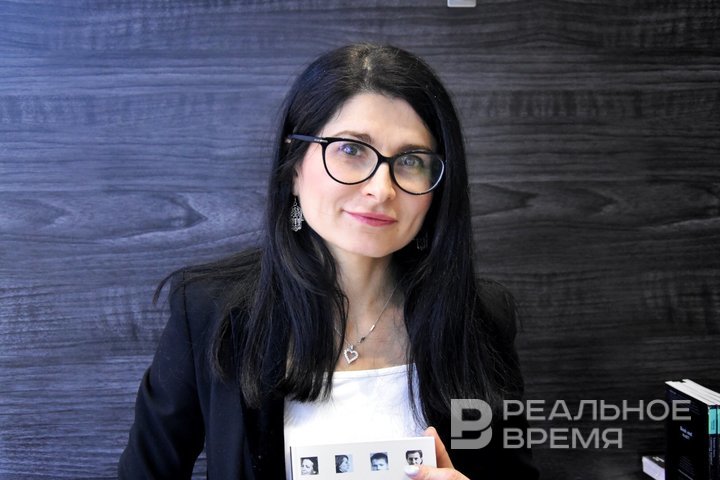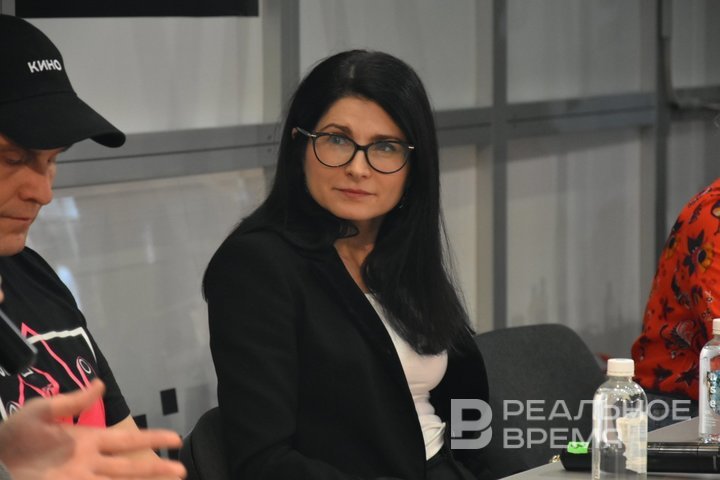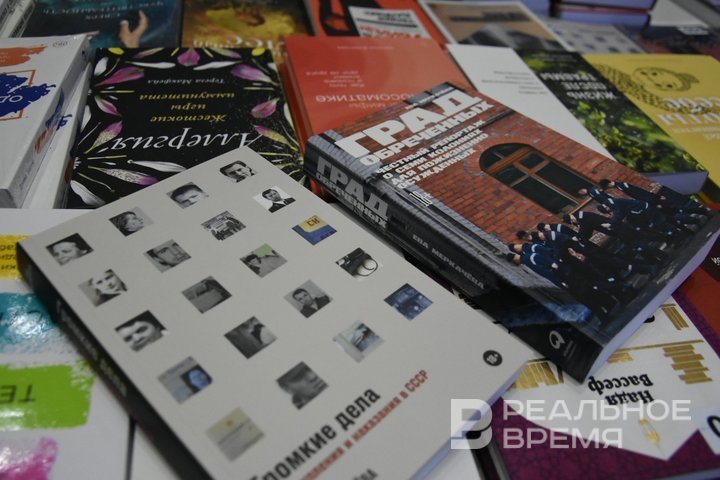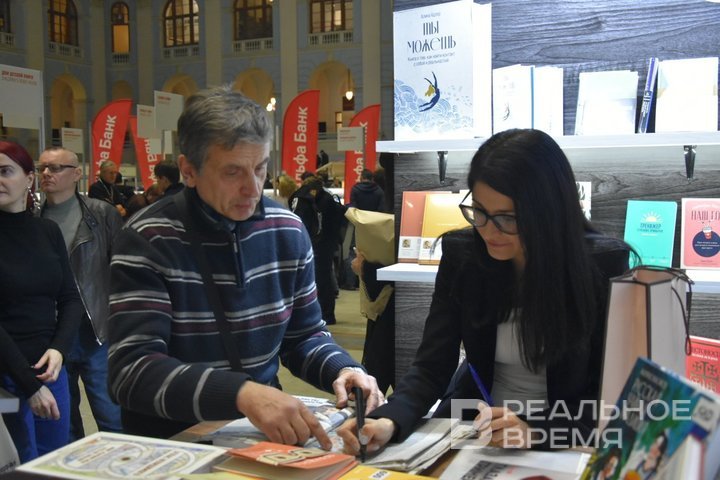Eva Merkacheva: ‘A maniac is always a magnetic figure’
Journalist and human rights activist Eva Merkacheva — on the romanticisation of maniacs, their fans, and the oblivion of crime victims

Serial killers are increasingly becoming protagonists in films, books, and podcasts. Their faces are printed on T-shirts, and fans send them letters in prison. At the same time, the names of their victims are forgotten, their stories erased from the public eye. Why does society romanticise violence? Who upholds the cult of maniacs? How can we shift attention back to the victims and put an end to this dangerous trend? Literary columnist for Realnoe Vremya Ekaterina Petrova discussed these questions with human rights activist, journalist, and writer Eva Merkacheva.
“Most often, in such stories, the victims are hardly shown”
How do you assess the image of the maniac in films, TV series, and fiction? Do modern media romanticise it, and what might this lead to?
It varies greatly, but overall, it feels like we are still following the classic script: the maniac is always a magnetic figure. I’ve rarely seen films where he is simply repulsive from the very start — without charisma, without mystery, just a vile person. Usually, it’s a complex but charming character. Take Hannibal Lecter, for example — an intellectual, an aesthete with his own philosophy. Some people even want to be like him.
Of course, creators need a vivid character. They want ambiguity, inner conflict, charisma. This trend is present not only in Russian cinema, but globally. And almost always, there’s something attractive in the image of the maniac. That’s frightening. Because there will always be someone who wants to emulate him. Yet it would be entirely possible to portray the maniac as he really is — pathetic, filthy, repulsive. Someone no one would want to imitate. That would be an honest image, without romanticisation. Also, note this — most often, in such stories, the victims are hardly shown. They remain in the background. And if they do appear, their pain is not the focus.
I’ve also noticed that in many films, series, and true crime podcasts, the main focus is on the perpetrator: we’re told about his childhood, motives, emotions, while the victims remain in the shadows. The only book I’ve read that shows the perspective of the murdered girl’s family is A Rip in Heaven by Jeanine Cummins. Why are there so few stories told from the victims’ point of view? Can this somehow change?
It’s a completely different experience when a story is told from the perspective of the victim or their loved ones. And I believe that today, it's especially important to focus on that. Why hasn’t this approach become widespread yet? Perhaps because stories about maniacs are seen as more compelling — they’re about power, even if it's a destructive power. The maniac acts, he triumphs, while the victim, almost by definition, is portrayed as weak. And most people want to read about power, even if it’s the power of evil.
But there are other kinds of stories — when the victim survives, when she triumphs, when, in the end, she turns out to be the strong one. We do have such examples, even if not many. It’s just that they’re rarely told. I’ve tried to follow such cases myself. But often it turns out that the person was saved almost by chance: the perpetrator got tired, got distracted, someone intervened just in time. There’s no clear dramaturgy in which the victim takes an active step and survives because of it. But these are exactly the kinds of stories that could form the basis of powerful works of fiction. This is a task for creative people. After all, if we’re not talking about documentary work but about fiction, then why not focus on the victim? Show their journey — not as a background figure, but as the main character who goes through hell and emerges victorious.

In Cummins’ book, the victim dies. But the story is told with a focus on her loved ones and family. They, too, are victims of the crime…
Yes, that’s a very important subject. Because even if the victim is killed, they leave behind people — loved ones who also have lives, and those lives are changed forever. And how they cope with the tragedy, how they perceive what happened, how they go on living — almost no one talks about that. Yet this is also a drama — powerful and real. It all comes down to dramaturgy and habit. It’s just that no one has set the tone yet, no one has shown that such a focus can be just as gripping as a story about a detective or the maniac himself. The priority, after all, is still to capture the audience’s or reader’s attention. And for now, the assumption is that a victim’s or their family’s story isn’t a “wow.” But in reality, that’s far from the truth.
We largely follow Western models. And there, too, the focus is almost always on the maniac or the detective. In other words, it’s about a kind of confrontation — the criminal versus those who are hunting him. But the confrontation between the criminal and those who suffered — that seems to remain underexplored. Perhaps that’s exactly where the future lies. Maybe, as we speak, someone is already writing such a story — and it will truly be powerful, emotional, and necessary.
What is the romanticisation of a maniac? What happens when a person reads a story about a maniac or watches a film about him?
They start to like the maniac. They begin to feel sorry for him, to want to be like him. Or they start to justify him.
Roughly speaking: he became a criminal because his mother didn’t love him enough?
That too. Romanticisation is essentially justification. It implies that he did what he did because he’s somehow “special,” “interesting,” “deep.” Take Hannibal Lecter, for example. He’s an intellectual, an erudite — and that somehow explains everything. It’s as if that makes it “permissible” for him. And if one is to be inspired by anyone, then it’s by Hannibal, not by some “ordinary” killer.
Why, for instance, did the Bitsevsky maniac gain a fan group? At one point, I believe it had around four thousand members. I even followed it on VKontakte and contacted Roskomnadzor to get it shut down as dangerous. People would send him love letters every day. They admired the way he killed: “Oh, how beautifully you killed that one,” “Here’s an axe just like his,” “Here’s the house where he lived.” They analysed his gaze. This is no longer mere curiosity — this is idolisation.
This is exactly how romanticisation reveals itself: as if he had the rightto do what he did — because he wasn’t an ordinary person, but someone “special.” A messenger. He himself tried to create that kind of mystique at some point: claiming he heard voices telling him he was transferring souls to another state, that the victims wanted it themselves. I’ve read his interrogation transcripts — it’s a stream of consciousness, pure delusion. But it’s precisely this “delusion” that creates the illusion of a “special mission.” But when a person is not just mentally ill, but a “messenger,” then suddenly it’s a different kind of story. One where, supposedly, he’s allowed. And that’s where it becomes dangerous. Because then you get people writing things like: “I dream that he would kill me,” “I want him to throw me into his well.” These are real phrases. People start to romanticise not just the crime — but the very possibilityof being his victim.

How did the phenomenon of fan groups dedicated to criminals emerge? What drives these people? Why do they choose exactly these “heroes”?
It varies from person to person. Among such admirers, there are different categories. Some, for example, do it simply to spite society. Against everyone, in defiance. They don’t care whom they support — as long as it goes against the majority opinion. Then there are others — those who secretly dream of violence but would never dare to commit it themselves. Inside, they harbour hatred, anger, a desire to destroy. But they can neither say this aloud, nor, of course, act on it. So they choose a “hero” who seems to do it for them. Through him, they express their aggression.
For example, they relate to the thought: “I hate people. I would destroy everyone. But I can’t. And he can. So I will admire him, worship him, because he did what I am incapable of.” To them, this seems like the only way to release the pent-up anger and cruelty — through a cult. Through the idolisation of the criminal.

“If this is not explained, life becomes frightening”
Where does romanticisation in books, films, and podcasts come from? Most likely, the author does it unintentionally. Or, when working with documents, they develop sympathy for the criminal?
It seems to me that romanticisation often arises from an attempt to find at least some explanation. For a mentally healthy person, the very existence of evil is something wild and incomprehensible. And then a human mechanism kicks in: the attempt to justify, to find a cause, to give the person a second chance. Otherwise, one would have to admit that God made a mistake. And God cannot make mistakes. One maniac I spoke with said: “God created me too. That means it was meant to be. He allowed it.” It’s the same reasoning as with Hitler: “God allowed Hitler.” In other words, people want to feel safe, and when they find some explanation, it becomes easier.
For example, someone might say: “He was just a victim in childhood — beaten, abused, he grew up with hatred and became a maniac.” This builds a comprehensible chain for the person: victim — trauma — violence. And when there is no explanation, nothing to hold on to, it becomes frightening. Because then it turns out that anyone can become a maniac. Even oneself. This is about trying to understand the nature of oneself and others.
I have spoken with people whose loved ones committed terrible crimes. Sometimes these were not serial killers, but one or two brutal episodes. And these relatives came to me to prove that the person was innocent. They brought case materials, pleaded their case. Yet, with each new fact, I only became more certain: it was him. One example — a young man killed a student; there is video evidence. The parents say, “Look, his sideburns aren’t like in the video. That’s not our son.” Even though it’s obvious — it’s the same person. But they clung to millimetres, shadows, insignificant details because accepting the truth means everything falls apart. To admit their son is a killer means enduring an inner catastrophe.
Another case — a man killed his wife, dismembered her, and carried her out in parts. The man’s father talks about the video showing his son carrying huge garbage bags: “He was just taking out the trash.” I watch it and see — there’s a body inside. But he says, “It’s just trash.” He’s explaining it to himself because he can’t do otherwise. Because if he admits the truth, it will destroy him. I even spoke with this man — he himself admitted, “Yes, I did it.” Yet his relatives still kept believing otherwise. Because accepting something so terrible means accepting that your loved one is a murderer. And how do you live with that love afterward? How do you love your son if he has killed? How do you come to terms with the guilt, shame, and fear that come with it? That is why people begin to justify, to seek explanations. Because otherwise — they couldn’t bear it. This applies not only to relatives. Even strangers, upon learning about a maniac who killed forty people, start inventing reasons: “Well, probably his mother was bad, this was a unique case.” Because if it isn’t explained, life becomes terrifying.
Nowadays, an incredible number of true crime projects are being released. Often, this becomes a form of entertainment in terms of how the information is presented. You can watch an action movie, or you can listen to stories about maniacs. Recently, a colouring book titled A Cozy Evening with Serial Killers has been published. Isn’t this a form of normalising crime? And how ethical is it to present tragic events as entertainment?
The presentation of tragic events is not always ethical. Unfortunately, behind the entertaining form often lies someone else’s pain. It seems to me this is a kind of defence mechanism — an attempt to avoid deep reflection, to escape fear. To stop being afraid, people start to laugh. To stop fearing the maniac, they turn him into a comic character. To some extent, this may help cope with anxiety. But it is dangerous. Because over time, a person may begin to perceive troubling traits in themselves or others as normal. Instead of seeking help from a specialist, they simply brush it off — “It’s no big deal.” I speak about this because I have met such maniacs — people who sincerely believed that killing is not terrible. Even fun. It seemed to me that they grew up in a culture where it was presented as something light, almost playful. One of them told me, for example: “I saw no reason to stop myself” — saying it defiantly, almost playfully. That is why I believe things like a colouring book about serial killers are very dangerous. It’s not just a joke. It is an element of normalising violence. And behind it may lie a very real tragedy.
Ekaterina Petrova — literary critic for Realnoe Vremya online newspaper and host of the Telegram channel Buns with Poppy Seeds.